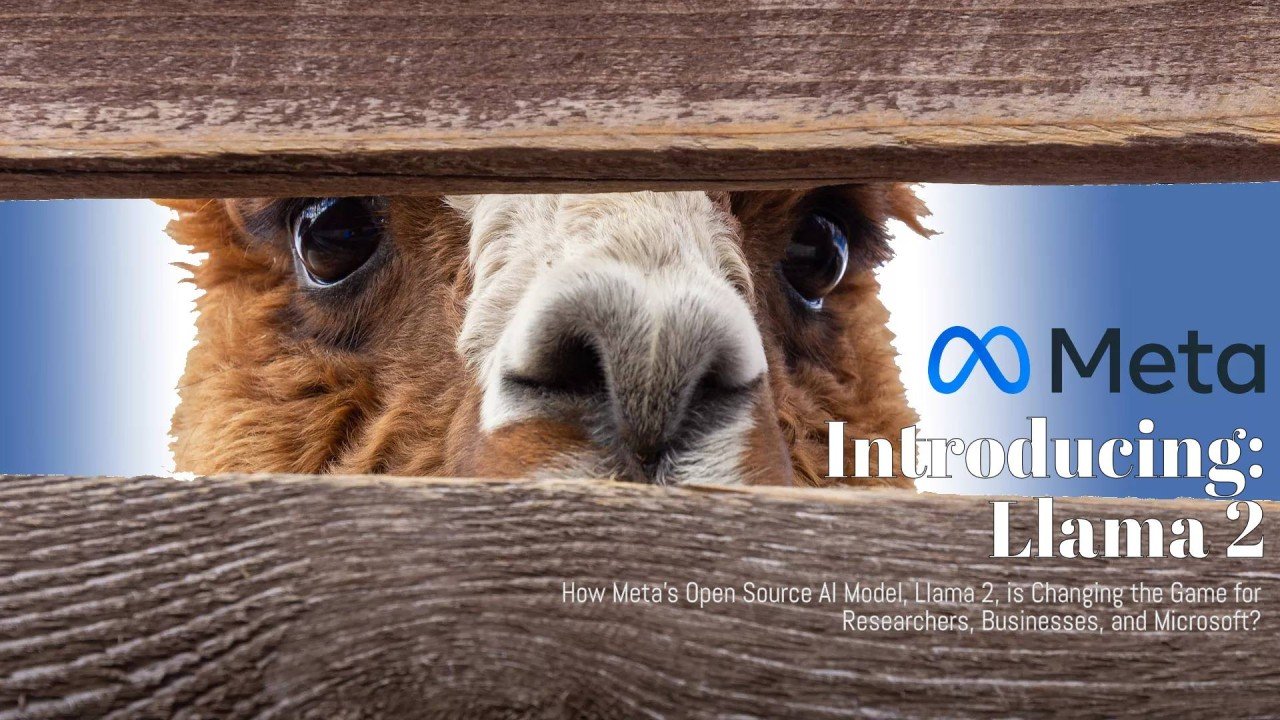Meta, formerly known as Facebook, is setting a new precedent in the race to dominate the artificial intelligence landscape with its latest large language model, LLaMA 2. This strategic move marks a significant pivot in Meta’s approach to AI development, challenging established players like OpenAI and their ChatGPT model.
Open Source as a Game Changer
In a bold move, Meta has released LLaMA 2 as an open-source model, a decision that diverges sharply from the practices of other tech giants like OpenAI and Google, whose models are proprietary. By making LLaMA 2 freely available, Meta aims to democratize access to advanced AI technologies, allowing a broader range of developers and researchers to innovate and build upon the model. This open approach is intended to accelerate the pace of AI development and application across various sectors.
LLaMA 2: An In-Depth Look
LLaMA 2, which stands for Large Language Model Meta AI, is the successor to LLaMA 1 and boasts significant improvements in terms of data training and capabilities. It has been trained on 40% more data than its predecessor, enhancing its language understanding and generation abilities. Despite this, Meta acknowledges that LLaMA 2 still trails behind OpenAI’s latest, GPT-4, in some performance aspects. However, for many practical applications, LLaMA 2’s capabilities are more than sufficiet.
Meta has also addressed safety and bias concerns more rigorously in this iteration, employing a variety of machine learning techniques to mitigate risks associated with AI-generated content. This includes training the model to better detect and handle offensive or harmful language, although challenges remain.
Practical Applications and Accessibility
One of the standout features of LLaMA 2 is its versatility and accessibility. The model can be integrated and run on various platforms, including cloud services like Microsoft’s Azure, and even on less powerful devices such as smartphones. This flexibility opens up a range of possibilities for application in real-world scenarios, from mobile apps to complex data analysis systems.
Meta’s partnership with Qualcomm to optimize LLaMA 2 for mobile devices highlights the practical applications of the model. By running AI directly on smartphones, Meta aims to reduce the reliance on cloud computing, which can lower costs and enhance user privacy.
The Broader AI Ecosystem and Ethical Considerations
While Meta’s open-source strategy could lead to rapid advancements in AI technology, it also raises important ethical and security concerns. The ease of access to powerful AI tools can potentially lead to misuse, underscoring the need for robust governance and ethical guidelines in AI development and deployment. Meta’s approach has been critiqued for not being fully transparent about the data sources used in training its models, which could affect the model’s fairness and the societal impact of its applications.
Meta’s launch of LLaMA 2 as an open-source model represents a significant shift in the AI landscape, challenging the status quo and fostering a more collaborative approach to AI development. By providing the tech community with the tools to innovate freely, Meta is not only enhancing its competitive edge but also contributing to a more dynamic and inclusive AI future.







